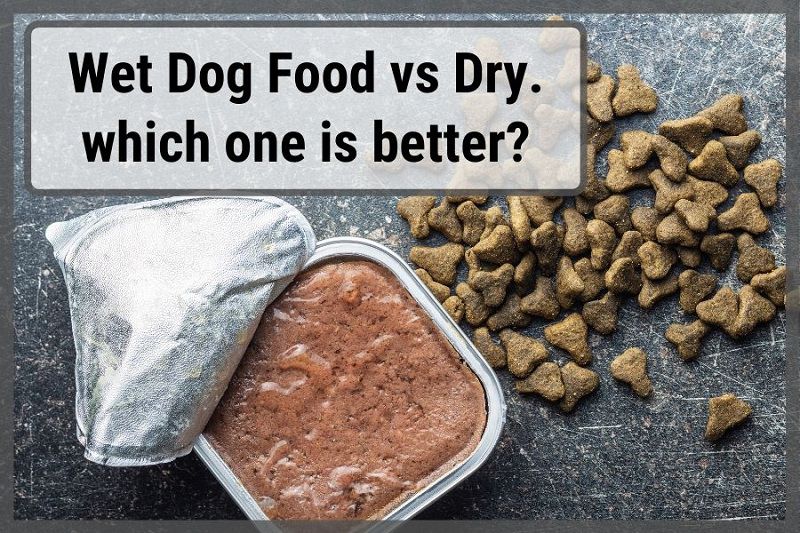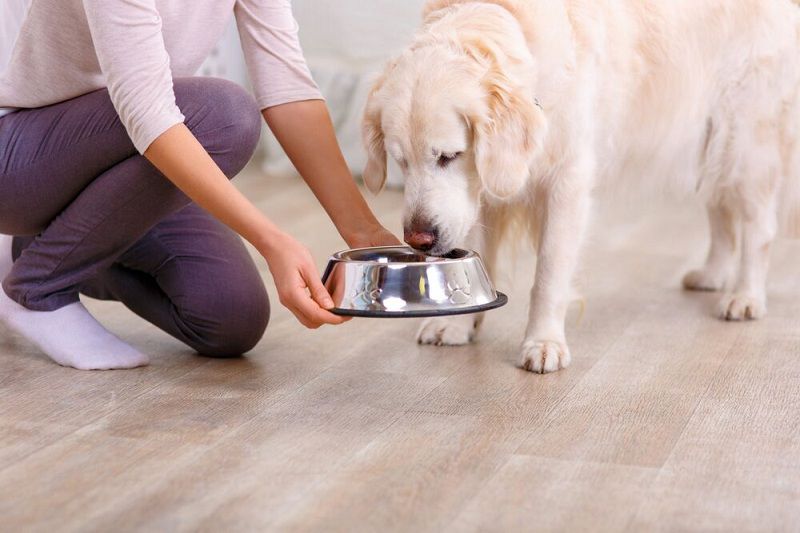Selecting the perfect dog food can be tricky. We want to make sure that our pets are getting the nutrition they need without consuming a bunch of funky additives and chemicals.
In fact, a recent survey found that nine out of ten dog owners want to make sure their dog is eating a diet as healthy (if not healthier) as they are.

Beyond the brands and ingredients, the debate often comes down to wet food vs dry food for dogs. Which one is better?
Read on to find out more about the pros and cons of wet and dry dog food to help you make an informed decision!
You can also see more dog supplements at this store – InnoVet.
I. Wet Food for Dogs
Wet food tends to come in a can or soft-sided container. It has a high protein concentration per serving, but because of the high water content, the servings tend to be larger than dry dog food. Owners of puppies and older dogs often opt for wet dog food.
Wet Food Pros
Because wet food is about 60-70% water, it can benefit dogs who have a habit of ignoring their water bowl. This is a good option if you’re worried about dehydration.
Wet food has a strong smell that dogs love! If your dog has lost some of her olfactory senses (a common occurrence in older dogs), wet food may attract her attention more than dry food.
Wet food is also easier on the teeth and jaws. If your dog has loose or missing teeth or a misaligned jaw, they will experience less discomfort eating wet food.
If you’re worried about malnutrition in a dog that has lost her sense of smell or the full use of her teeth and jaws, wet dog food is the way to go.
Wet Food Cons
Wet food tends to be pretty messy, getting caught in the hair or fur around a dog’s mouth and snout. When it gets into carpeting, it’s harder to clean up than dry food.
When feeding your dog wet food, keep a close eye on expiration instructions. You should not let wet dog food sit out in your dog’s bowl for more than an hour or it will dry out and become compromised.
Once a can or container is opened, it needs to be covered and refrigerated quickly. After that, you may only have a day or two before it is no longer suitable to serve.
High-quality wet food may also be more expensive per serving than high-quality dry food.

II. Dry Food for Dogs
Dry food tends to come in large bags or plastic containers. If you purchase high-quality dry food, you’ll find similar protein levels to wet dog food. Owners of dogs who are older than six months but not yet old often rely on dry dog food.
Dry Food Pros
Dry food is much easier to store, has a longer shelf life, and can sit out safely in a bowl for longer than wet food. For that reason, it is considered a more convenient and oftentimes more economical choice for dog owners.
Some dry dog food is formulated to help with your dog’s dental health. The texture and shape can help to reduce the plaque and tartar buildup in your dog’s mouth and on her teeth as she chews her crunchy food.
Dry dog food comes in a large variety of sizes and ranges from extra crunchy to semi-soft. It is a versatile option and you can find a suitable variety for any breed or size.
Dry Food Cons
Dry food tends to have a 6-10% moisture level, meaning it will provide little to no hydration for your dog. Make sure that your dog is drinking adequate amounts of water if she eats dry food!
You also need to pay close attention to dry food ingredients. In order to create a crunchy texture, dry food requires binders and preservatives. Look out for dry food brands that list corn or wheat as one of the first ingredients and avoid brands that use BHA or BHT preservatives.
In addition, there are dry food brands that use “animal by-products” rather than actual meat. Avoid any brands that list animal by-products in the ingredients, as these can have a much lower nutritional value.
Wet Food vs Dry Food for Dogs: Why Won’t My Dog Eat Either?
Sometimes, owners are looking to select a new dog food because their dog simply won’t eat what they’re provided. There are a number of reasons dogs avoid their food, from illness-related appetite loss to anxiety. If your dog isn’t eating any of the different foods you’ve provided, talk to your vet about potential causes.
If your dog is turning down her food, consider introducing CBD into her diet. CBD has tons of awesome benefits for dogs, including reducing nausea and anxiety and increasing their appetite. CBD dog treats are a great way to administer CBD!
So, Is Wet Food or Dry Food Better for Dogs?
The truth is, the wet food vs dry food for dogs debate does not end with a one-size-fits-all answer. As you can see, there are pros and cons to both wet food and dry food. The one you choose will come down to your dog’s individual dietary and physical needs.
Do you have more questions about your pets that need an answer? We’ve got you covered! Bookmark our page to find more helpful information on pet costs, needs, breeds, and more.
